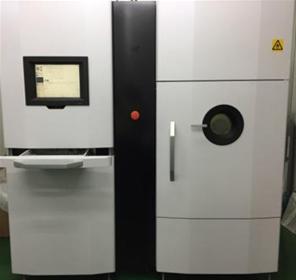
The additive manufacturing technology (also known as 3D printing) has been the focus of attention in recent years and the Metal Industries Research & Development Centre (MIRDC) has used its technical capabilities to continuously help Taiwanese medical device manufacturers gain larger market shares in the high-end medical device market, meantime brings about the innovation of medical device. With the support of the technology development program "Indigenous R & D Program of the Localization for High Value Metal Materials and Manufacturing Technologies in Key Industries ", sponsored by the Department of Industrial Technology, MOEA, the achievements of the R&D of 'electron beam 3D forming technology' integrated the capabilities of industrial, academic and research sectors, namely Pao Nan Biotech, Dr. Dai-Hua Yang's team of the Medical Device Innovation Center of National Cheng Kung University and Professor Chen-Kuang Chen's team of the Department of Materials and Mineral Resources Engineering & Institute of Materials Science and Engineering of National Taipei University of Technology. It takes three years to successfully develop the '3D Titanium Alloy Porous Fusion Cage' and to obtain a permit from the Food and Drug Administration of the Ministry of Health and Welfare (MHW Medical Device Production No. 006047). The fusion cage becomes the first Class 2 long-term spinal implant that applies metal additive manufacturing technology.
The principal investigator of the Program, Dr. Chia-Min Wei, vice president of MIRDC, stated that as the global population continues to age, the population with degenerative spine conditions would also increase. Providing better spinal implant has become a goal for all medical device manufacturers. Traditional plastic fusion cages are less compatible with the human body and bone cells cannot easily grow into cage. MIRDC's electron beam 3D forming technology can now be used to produce 3D porous structure that facilitates bone growth. The technology can be applied to human spinal implants to provide better efficiency and environment for bone growth.
The aforementioned R&D achievement is transferred to the major domestic medical device manufacturer, Pao Nan Biotech Co., Ltd. through technology licensing. Pao Nan Biotech also integrates the technology with its own innovative design capability and expertise in producing medical devices. In addition, MIRDC connects the biomechanical expertise and clinical experience of the Medical Device Innovation Center of National Cheng Kung University and the materials analysis capabilities and engineering experience of National Taipei University of Technology to achieve the product development of the 3D Titanium Alloy Porous Fusion Cage through industrial and academic collaboration. The permit was obtained in May, 2018. MIRDC will continue to play the guiding role and assist companies in mass production with hope of providing new options with domestic additive manufacturing fusion cages that are superior to traditional implants to citizens during their spine treatment process in the future.